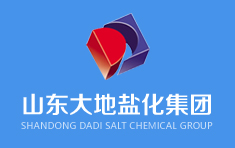As the chemical industry needs to consume a large amount of raw salt, with the economic growth of China, the salt chemical industry has developed by leaps and bounds. China has become a global salt chemical production country, while the raw salt consumption is mainly in the chemical industry, among which the caustic soda and soda ash industries are In large quantities, the production of caustic soda and soda ash in China has continued to grow significantly in recent years, driving the production of raw salt, which has led to a simultaneous growth in the production of raw salt.
(A) Chlor-alkali industry
China is a big chlor-alkali producer in the world. The chlor-alkali industry is a basic raw material industry for producing caustic soda, chlorine and hydrogen from salt and electric power. The chlor-alkali products are of various types and have a high degree of correlation. The downstream products reach thousands of products and have high economic extension value. It is widely used in agriculture. The petrochemical, light industry, textile, building materials, electric power, metallurgy, national defense military, food processing and other vital sectors of the national economy have a pivotal position in China's economic development. According to the authoritative department, the one-off economic output value of 10,000 tons of chlor-alkali products is more than 1 billion yuan. China has always regarded the output and economic indicators of major chlor-alkali products as an important indicator of China's national economic statistics and assessment.
The overall supply of caustic soda in China is oversupplied, and the diaphragm alkali production that the country has eliminated is still a large proportion. The diaphragm alkali production method has a larger area than the ion membrane alkali production method, and the energy consumption is 20%-30% higher, the product quality is poor, and the cost is high. The process is backward and the environmental pollution is serious. Therefore, the ion membrane production method has a huge advantage over the diaphragm caustic soda production method, which provides a good opportunity for the development of advantageous enterprises in the industry. The backward production capacity of the diaphragm process and the growing demand for caustic soda in the downstream industry, which need to be eliminated in the industry, have made room for the development of raw materials and large ion membrane production enterprises. According to the requirements of the 2011 edition of the “Guidance Catalogue for Industrial Structure Adjustment” promulgated by the National Development and Reform Commission, the diaphragm caustic soda plant was completely withdrawn at the end of 2015. According to China's chlor-alkali website, as of the end of 2015, China's diaphragm alkali production capacity fell to 550,000 tons.
Affected by factors such as economic situation, new capacity, market sentiment, and chlor-alkali balance, the growth rate of China's caustic soda production has shown a large difference in recent years. At the end of 2015, there were 163 caustic soda production enterprises in China, with a total production capacity of 38.73 million tons/year, of which ion membrane production capacity was 38.18 million tons, accounting for 98.6%. Compared with 2010, the total production capacity increased by 28.2%, mainly in Shandong. Jiangsu, Inner Mongolia, Xinjiang, Henan and Zhejiang provinces accounted for 62.2% of total production capacity. In 2016, the output of the main products of the chlor-alkali industry increased year-on-year, and the operating rate also increased compared with last year. The average annual operating rate of caustic soda is about 83%, and there are 158 production enterprises with a total production capacity of 39.45 million tons. The average size of a single enterprise is 250,000 tons/year.
National caustic soda production capacity and production status in 2012-2016
Unit: 10,000 tons
| 2012year | 2013year | 2014year | 2015year | 2016year | |
Production capacity | 3736 | 3850 | 3910 | 3873 | 3945 |
| Yield | 2699 | 2854 | 3180 | 3028.1 | 3270 |
(B) Fine Chemicals
The production capacity of bromine is less than 900,000 tons in the world, including more than 400,000 tons in the United States, about 300,000 tons in Israel, and 16-17 million tons in China. Other countries such as the United Kingdom, Japan, and Russia produce very little. Among the 160,000 tons of China's production capacity, Weifang City, where the Dalian Salt Chemical Group Co., Ltd. is located, produces about 12-13 million tons, accounting for 70%-76% of the total production in China. Analysts say the global bromine industry has a market value of about $2 billion a year. With the increasingly stringent mercury emission limits in the world, the demand for bromine will continue to grow. However, due to the Chinese government's awareness of environmental protection in recent years, anti-pollution equipment related to bromine-related enterprises will not be in compliance with government regulations in the next few years, and will be forced to suspend production and dismantle production equipment, which will lead to a significant reduction in domestic bromine production and a large price of bromine. rise.




